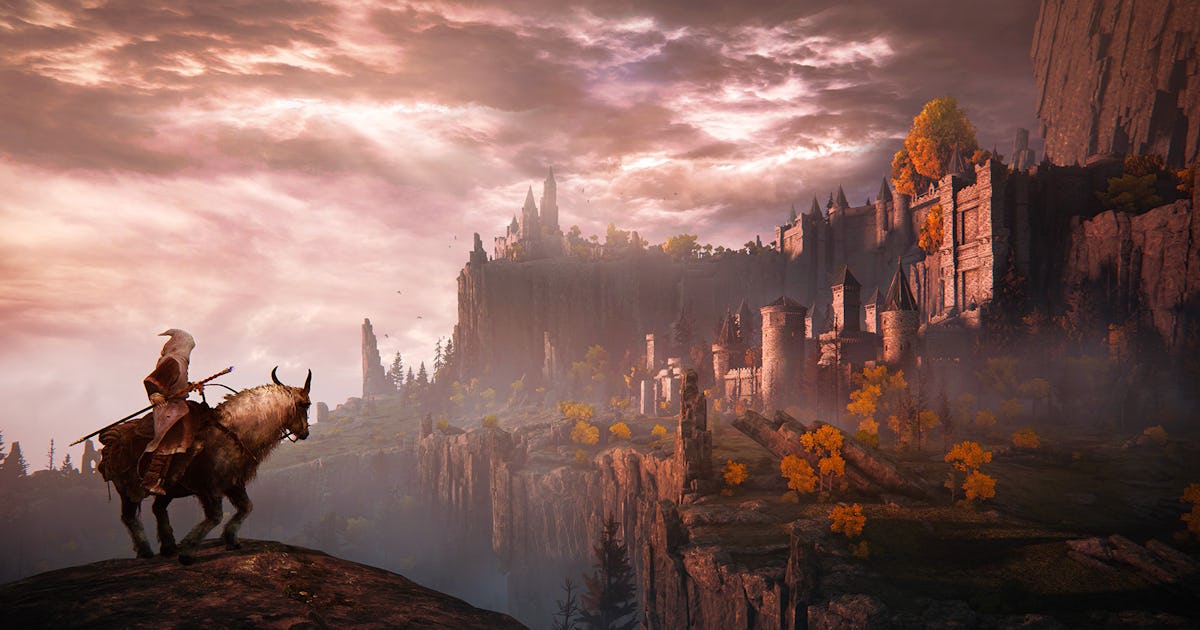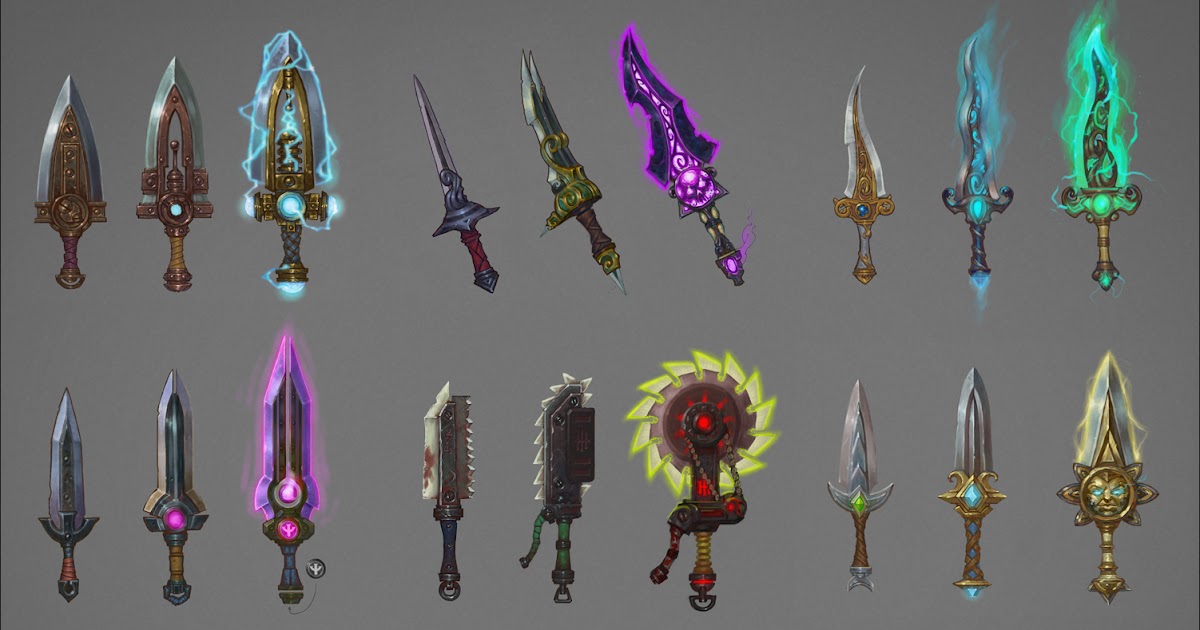Graphics in Video Games: From the 8-Bit Era to 4K Resolution
In the dynamic world of video games, where technology and creativity unite to offer unparalleled entertainment, the evolution of graphics has played a pivotal role. With cutting-edge advancements, graphics have transformed the very essence of the gaming experience, making it more immersive and visually stunning.
The Impact of Graphics on Gaming Experience Graphics in video games aren’t just a superficial layer; they are a portal to entirely new worlds and experiences. This article delves into the captivating journey of how graphics have evolved and their profound impact on the realm of gaming.
The 8-Bit Era: Where It All Began

The Birth of Video Games Our voyage through the annals of gaming history commences with the era where it all began – the 8-bit epoch. The birth of video games, often traced back to the late 1970s and early 1980s, witnessed the creation of games that laid the foundation for the immersive digital realms we explore today.
Limitations of 8-Bit Graphics Though the pioneers of their time, 8-bit graphics had their constraints. These graphics, characterized by their blocky and pixelated appearance, challenged developers to create captivating experiences within these limitations.
Iconic Games of the 8-Bit Era Despite the limitations, the 8-bit era gave birth to iconic games that have left an indelible mark on the gaming industry. Titles like “Super Mario Bros.” and “The Legend of Zelda” remain beloved classics that players cherish to this day.
The 16-Bit Revolution: A Step Forward
Advancements in 16-Bit Graphics The 16-bit revolution marked a significant step forward in the evolution of gaming graphics. This era introduced more vibrant colors, smoother animations, and a heightened sense of depth, providing players with a more immersive experience.
Rise of the Console Wars The competition between gaming giants, like Sega and Nintendo, fueled the console wars. This intense rivalry pushed the boundaries of 16-bit graphics, as each company vied to outdo the other in a quest for gaming supremacy.
Beloved 16-Bit Game Titles The 16-bit era is remembered not only for technological advancements but also for the emergence of beloved game titles. Classics such as “Sonic the Hedgehog” and “Super Metroid” showcased the creative potential of 16-bit graphics.
The Transition to 3D Graphics
Emergence of 3D Graphics The transition from 2D to 3D graphics marked a seismic shift in the gaming landscape. The emergence of 3D graphics opened up new dimensions for game developers, allowing them to craft expansive worlds with depth and realism.
The Pioneering Titles Games like “Super Mario 64” and “The Legend of Zelda: Ocarina of Time” were pioneers in the 3D realm, setting new standards for interactive storytelling and immersing players in fantastical 3D universes.
3D Graphics Challenges and Solutions As the gaming world embraced 3D, developers encountered challenges such as polygon limitations and hardware demands. This chapter explores the ingenious solutions that allowed 3D graphics to flourish.
The PlayStation and N64 Era: Breaking New Ground
Sony’s PlayStation vs. Nintendo 64 The rivalry between Sony’s PlayStation and Nintendo 64 elevated the gaming experience. These platforms brought 3D graphics into the mainstream and provided players with a glimpse of the future.
3D Graphics vs. 2D Graphics This chapter discusses the pivotal shift from 2D to 3D graphics and how it impacted gameplay, storytelling, and player engagement.
Notable Games of the PlayStation and N64 Era The era of PlayStation and Nintendo 64 birthed iconic games like “Final Fantasy VII” and “The Legend of Zelda: Ocarina of Time,” setting a high standard for graphics and storytelling that resonates even today.
The Rise of High Definition (HD) Graphics

HD Graphics in the Early 2000s The early 2000s witnessed a significant leap in graphics technology with the advent of high-definition (HD) graphics. This technological leap brought about more detailed and visually stunning gaming experiences.
Gaming on PlayStation 2 and Xbox The PlayStation 2 and Xbox were instrumental in bringing HD graphics to the forefront. These consoles pushed the boundaries of what was achievable, introducing players to cinematic visuals and immersive gameplay.
The Impact of HD Graphics on Gameplay HD graphics not only enhanced visual fidelity but also revolutionized gameplay. This chapter delves into how improved graphics influenced game mechanics, level design, and player immersion.
Introduction of High Definition (HD) Resolutions
Transition to HD Resolutions The transition to HD resolutions was a pivotal moment in the history of gaming graphics. This chapter explores how the shift to higher resolutions, such as 720p and 1080p, elevated the overall visual quality of games.
The Role of HDTVs and Monitors HD resolutions would be incomplete without the hardware to support them. HDTVs and high-quality monitors became essential companions for gamers seeking the full HD experience.
Game Titles that Embraced HD Resolutions As the gaming industry embraced HD resolutions, numerous titles emerged that showcased the potential of this technology. Games like “Gears of War” and “Uncharted” wowed players with their stunning graphics and attention to detail.
The 4K Resolution Era: Gaming in Ultra-High Definition
What Is 4K Resolution? Enter the era of ultra-high-definition (4K) graphics. This chapter delves into the technicalities of 4K resolution, a term that has become synonymous with visual excellence in gaming.
Benefits of 4K Graphics in Gaming 4K graphics offer a wealth of benefits, from unparalleled image clarity to enhanced realism. Discover how this resolution revolutionizes the gaming experience.
The Pinnacle of Graphics Quality 4K graphics represent the pinnacle of visual quality in the gaming industry. Games like “Red Dead Redemption 2” and “Horizon Zero Dawn” demonstrate the breathtaking beauty achievable with 4K resolutions.
Gaming Platforms and 4K Graphics
PC Gaming and 4K PC gaming has been at the forefront of 4K graphics adoption. Explore how powerful gaming rigs and cutting-edge graphics cards make PC gaming a haven for high-resolution enthusiasts.
4K Gaming Consoles The realm of console gaming hasn’t been left behind. This section discusses how consoles like the PlayStation 5 and Xbox Series X have brought 4K gaming to the living rooms of millions.
4K Graphics on Mobile Devices Even mobile gaming is experiencing a transformation, with some smartphones offering 4K displays and graphics that rival traditional gaming platforms. This chapter looks at the impact of 4K on mobile gaming.
The Graphics Arms Race: Ray Tracing and Realism
The Introduction of Ray Tracing Ray tracing, a technique borrowed from the film industry, has become a game-changer in gaming graphics. Learn how it simulates the behavior of light to create astonishingly realistic visuals.
Achieving Realism in Video Games Realism in video games has always been a pursuit of game developers. Discover how ray tracing and other techniques have brought us closer to photorealistic gaming experiences.
Ray Tracing in Popular Game Titles Ray tracing has left its mark on various games, from “Cyberpunk 2077” to “Minecraft.” This section highlights how these titles leverage ray tracing to create visually stunning worlds.
Art Direction in Video Games
The Role of Art Direction in Graphics Art direction is a critical element that shapes the visual identity of video games. This chapter explores how it influences the aesthetics, atmosphere, and storytelling within a game.
Immersive Environments and Worlds Art direction plays a pivotal role in creating immersive game worlds. From the lush landscapes of “The Witcher 3” to the haunting corridors of “BioShock,” this section showcases how art direction defines these environments.
Case Studies of Games with Exceptional Art Direction To illustrate the power of art direction, we examine games such as “Cuphead” and “Hollow Knight,” where unique visual styles and artistic direction have garnered acclaim and admiration.
Challenges in Achieving Realistic Graphics
Hardware and Performance Demands Creating realistic graphics places significant demands on hardware. This chapter discusses the hardware requirements and the challenge of keeping up with evolving technology.
Balancing Realism with Playability While realism is desirable, it must be balanced with playability to ensure a smooth gaming experience. Discover the delicate equilibrium game developers strive to achieve.
The Future of Graphics Challenges As technology continues to evolve, new challenges and opportunities emerge. Explore what the future holds for the ongoing pursuit of realistic and stunning graphics in video games.
The journey through the evolution of graphics in video games continues. Stay tuned for the subsequent chapters where we explore the impact of virtual reality, the role of graphics in game marketing, the significance of game engines, and more.
The Impact of Virtual Reality (VR) on Graphics
VR and Immersion Virtual reality (VR) has taken the gaming world by storm, offering an unparalleled level of immersion. This chapter delves into how graphics play a crucial role in enhancing the VR experience.
Graphics Requirements for VR VR demands graphics that are not only visually stunning but also capable of maintaining high frame rates. Discover the technical requirements and challenges of rendering graphics for VR.
Popular VR Games and their Graphics From “Half-Life: Alyx” to “Beat Saber,” VR has birthed a new wave of games with graphics designed to transport players to alternate realities. This section explores how these titles utilize graphics to create unforgettable VR experiences.
The Importance of Graphics in Game Marketing
Attracting Players with Stunning Graphics The visual appeal of a game is often the first hook that attracts players. This chapter discusses the role of graphics in creating eye-catching marketing materials and trailers.
Graphics as a Competitive Advantage In a crowded gaming market, exceptional graphics can set a game apart. Learn how high-quality visuals can be a competitive advantage that draws players in.
The Role of Trailers and Screenshots Trailers and screenshots are essential tools in marketing a game. This section examines how they showcase a game’s graphics and generate anticipation among players.
The Role of Game Engines in Graphics Development
The Significance of Game Engines Game engines are the unsung heroes behind stunning graphics. This chapter explores the critical role they play in graphics development and overall game design.
Popular Game Engines Game developers have a plethora of engines at their disposal. We’ll explore some of the most popular engines, such as Unity and Unreal Engine, and their impact on the gaming landscape.
Game Engine Innovations Game engines continue to evolve, pushing the boundaries of what’s possible. Discover the innovations in game engines that have driven graphics to new heights.
User-Generated Content and Graphics
Customizing Graphics in Games User-generated content allows players to customize their gaming experience, including graphics. This chapter delves into the impact of mods and custom content on a game’s visuals.
Modding and Community Contributions Modding communities have sprung up around many games, creating a thriving ecosystem of user-generated content. Explore how these communities have influenced graphics.
Games that Encourage User-Generated Content Some games actively encourage and support user-generated content, allowing players to shape the graphics and gameplay. This section highlights titles like “Minecraft” and “Cities: Skylines” that thrive on community contributions.
The Art of Character Design in Gaming

Character Design as a Graphic Element Characters are not just central to gameplay but are also graphic elements. This chapter discusses the art of character design and its impact on the overall visual narrative.
Iconic Video Game Characters Video games have given birth to iconic characters like Mario, Lara Croft, and Master Chief. Explore how these characters’ design and evolution have left an indelible mark on gaming history.
Character Evolution through the Years Characters often undergo significant visual transformations as technology advances. This section showcases how characters from classic games have evolved alongside graphics.
The Future of Graphics in Video Games
Upcoming Graphics Technologies The future of gaming graphics is an exciting frontier with technologies like ray tracing, AI upscaling, and more. Dive into the innovations poised to shape the future.
Predictions for Graphics in Gaming What can we expect in the coming years? This chapter explores predictions for the direction graphics will take in the gaming industry.
Potential Game-Changers on the Horizon From quantum computing to holographic displays, potential game-changers loom on the horizon. Discover the emerging technologies that could redefine gaming graphics.
The journey through the evolution of graphics in video games is far from over. Stay tuned for the next chapters where we explore the role of graphics in storytelling, the significance of graphics in different gaming genres, the art of texture mapping, accessibility in gaming graphics, and the cultural impact of graphics in gaming.
Graphics and Storytelling in Video Games
Storytelling through Visuals Graphics are not just for aesthetics; they are storytellers in their own right. This chapter delves into how graphics play a crucial role in conveying narratives and emotions in video games.
Emotion and Immersion A game’s ability to evoke emotions and immerse players often depends on its graphics. Explore how the visual aspect contributes to player engagement and empathy.
Memorable Games that Excel in Storytelling Certain games are celebrated for their exceptional storytelling through graphics. Titles like “The Last of Us” and “Journey” are shining examples of this art form.
Graphics in Different Gaming Genres
Graphics Styles in Different Genres Each gaming genre has its unique graphic style. From the pixel art of retro platformers to the hyper-realism of survival horror, this chapter delves into the diverse graphic styles across genres.
The Role of Graphics in Gameplay Graphics go beyond mere visuals; they impact gameplay. This section explores how the visual style and presentation of a game can influence mechanics and player experience.
Case Studies of Genre-specific Graphics We’ll look at specific games that exemplify the graphic styles of their respective genres. From the cel-shaded beauty of “Borderlands” to the minimalist elegance of “Limbo,” these games showcase genre-specific graphics.
The Art of Texture Mapping
What Is Texture Mapping? Texture mapping is a critical aspect of graphics that adds depth and realism to surfaces in 3D environments. This chapter explores the science and art of texture mapping.
Enhancing Realism with Textures Textures are the fine details that breathe life into the gaming world. This section discusses how textures are used to enhance realism and create immersive environments.
Advancements in Texture Mapping Techniques As technology advances, so do texture mapping techniques. Learn about the innovations that have brought increasingly detailed and lifelike textures to video games.
Accessibility in Gaming Graphics
Making Games Inclusive Accessibility in gaming is of growing importance. This chapter examines how developers are working to make games more inclusive for players with different abilities.
Visual Impairments and Graphics For players with visual impairments, graphics pose unique challenges. Discover the technologies and practices that aim to improve gaming accessibility.
Industry Efforts for Accessibility The gaming industry is making strides in ensuring that everyone can enjoy their products. We’ll look at the initiatives and advancements in this field, from customizable UIs to audio cues.
The Cultural Impact of Graphics in Gaming
Influence on Pop Culture Video games have become a significant part of popular culture. This chapter explores how gaming graphics have influenced movies, fashion, and art.
Graphic Evolution and Nostalgia As graphics have evolved, they’ve left a trail of nostalgia. Players often look back fondly on the visual styles of their favorite games. This section examines the intersection of graphic evolution and nostalgia.
Cultural References in Modern Games Modern games often draw inspiration from cultural references, both past and present. Explore how these references are interwoven into a game’s graphics, enriching the player’s experience.
The Business of Graphics: Development Costs and Returns
Investing in Graphics Development Creating stunning graphics comes at a cost. This chapter delves into the financial investments required to develop high-quality graphics for video games.
The ROI of Stunning Graphics While the cost of development is high, exceptional graphics can lead to substantial returns. Learn how graphics impact the commercial success of games.
Balancing Costs and Quality Game developers face the challenge of balancing development costs with the need for high-quality graphics. This section explores the decision-making process that goes into achieving this equilibrium.
Gaming Graphics and Hardware
Graphics Cards and Technology Powerful graphics cards are the backbone of modern gaming. This chapter discusses the evolution of graphics card technology and their role in delivering stunning visuals.
Custom Gaming PCs Custom gaming PCs are the go-to choice for enthusiasts seeking the best possible graphics. We explore the world of custom builds and how they impact gaming graphics.
Graphics Performance Benchmarks Benchmarking is crucial for gauging the capabilities of gaming hardware. Discover how performance benchmarks help players determine the optimal settings for their games.
Conclusion
The Ongoing Evolution of Video Game Graphics The journey through the evolution of video game graphics has been a thrilling ride. This concluding chapter reflects on the continuous evolution of graphics and their ever-growing importance in the gaming industry.
The Significance of Graphics in the Gaming Industry Graphics have emerged as a cornerstone of the gaming experience, impacting gameplay, storytelling, and player immersion. This section highlights the significance of graphics in shaping the industry’s landscape.
The Future of Visual Excellence in Video Games As technology advances and new horizons emerge, the future of video game graphics promises even more breathtaking and immersive experiences. We conclude with a glimpse into what lies ahead for the world of gaming visuals.
Frequently Asked Questions (FAQ) About Graphics in Video Games: From the 8-Bit Era to 4K Resolution
Why are graphics important in video games?
Graphics are crucial in video games because they enhance the overall gaming experience, making it more immersive and visually appealing. High-quality graphics contribute to realism and storytelling.
What is the significance of the 8-bit era in gaming graphics?
The 8-bit era was the foundation of modern gaming, setting the stage for future advancements. It introduced iconic games like “Super Mario Bros.” and “The Legend of Zelda.”
How has 4K resolution transformed gaming visuals?
4K resolution offers four times the pixel density of standard HD, delivering sharper, more detailed, and lifelike graphics. It has become the pinnacle of visual quality in gaming.
How do game developers use art direction to enhance graphics?
Art direction influences the aesthetics, atmosphere, and storytelling in video games. It plays a key role in creating visually striking and immersive game worlds.
What is the cultural impact of gaming graphics on popular culture?
Gaming graphics have significantly influenced popular culture, inspiring movies, fashion, and art. Games have become a source of creative inspiration and cultural references in various media forms.
In our previous post about the evolution of graphics in video games, we explored how gaming visuals have developed from the 8-bit era to the 4K resolution era. This time, we delve deeper into the technical aspects and innovations that have shaped the visual landscape of the gaming world. To better understand the art of texture mapping, check out our article on “The Science Behind Texture Mapping in Video Games.” For a look into the future of graphics and their role in storytelling, our post on “E-Sports: Growth and Impact in the World of Electronic Gaming” provides valuable insights.
To gain a broader perspective on the ever-evolving world of gaming graphics, we recommend exploring relevant content from authoritative sources. A fantastic resource on the significance of graphics in gaming can be found on the Medium, where they frequently delve into the latest developments and innovations. For a deep dive into the impact of 4K graphics in modern gaming, be sure to read the comprehensive guide on Digital Trends, where they analyze the benefits and challenges of 4K gaming in detail. Finally, for a broader view of how gaming graphics influence culture, The New York Times has an engaging article on the cultural impact of video game graphics on popular culture. These external sources provide valuable perspectives on the topic.




Uma resposta